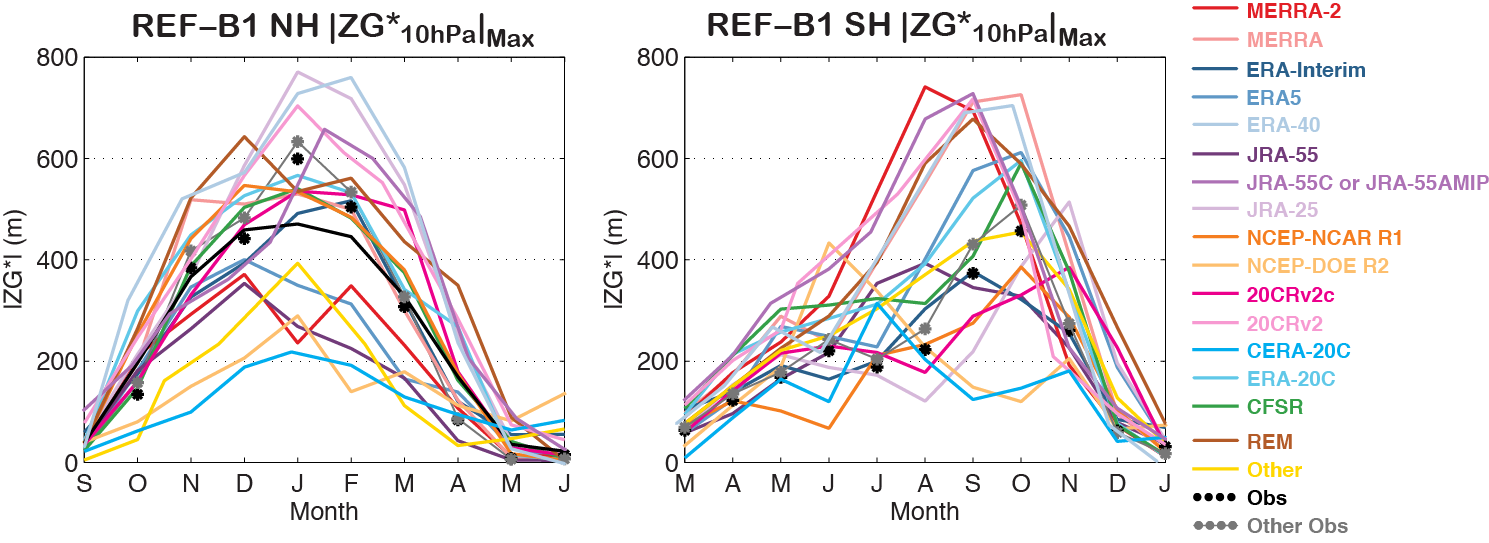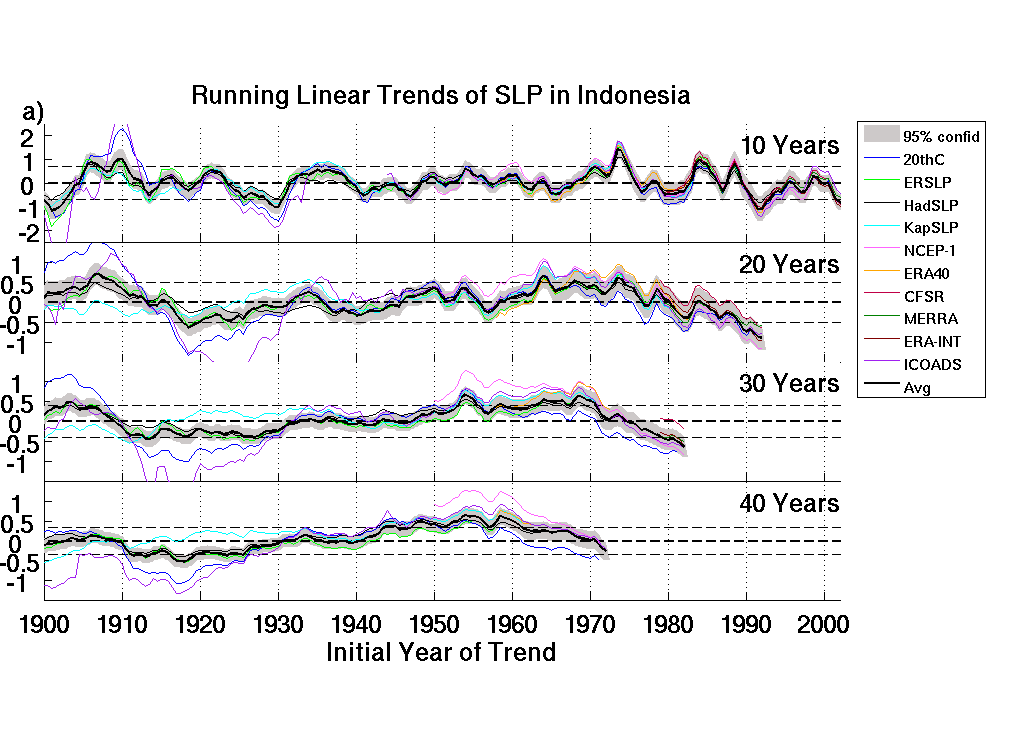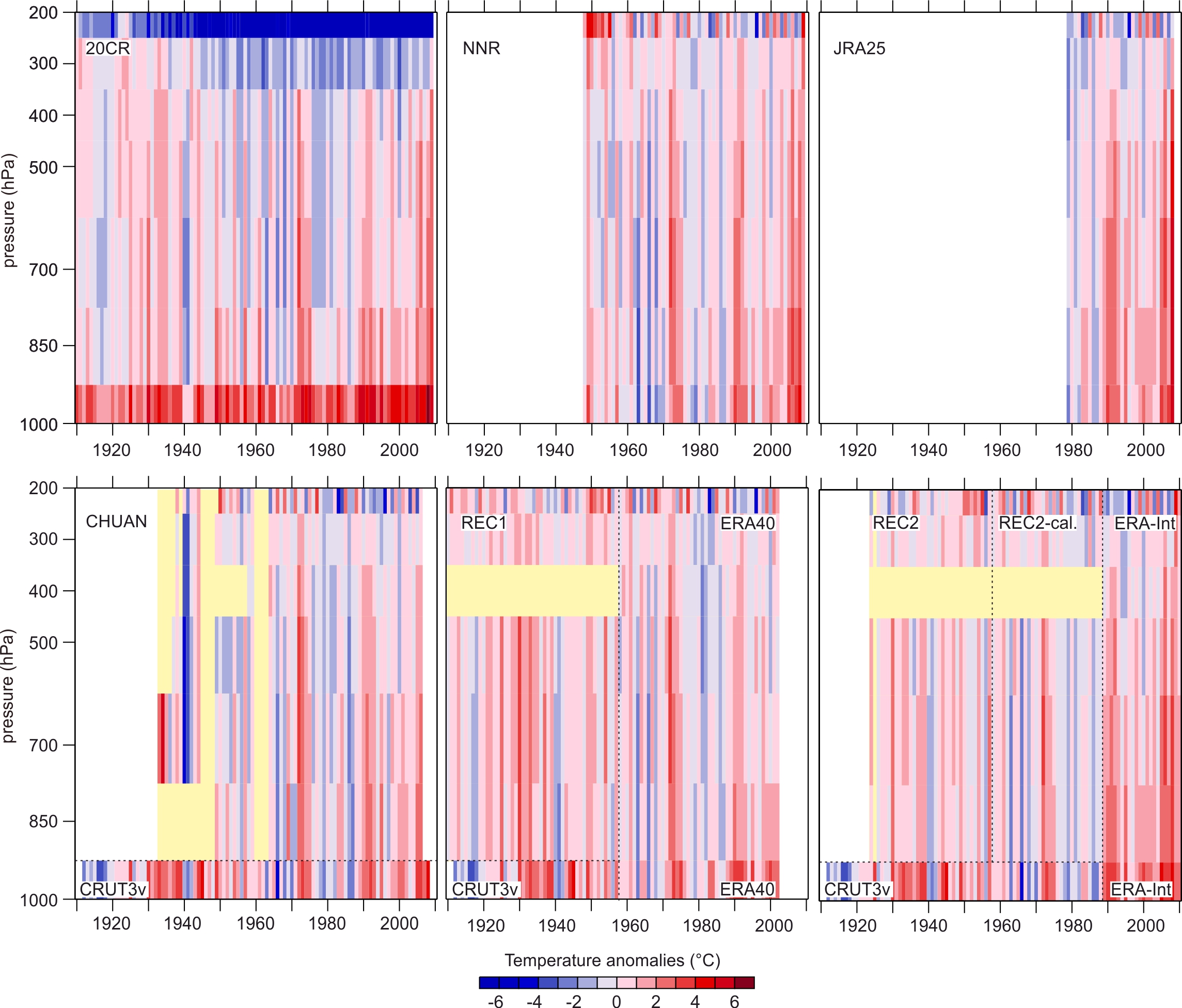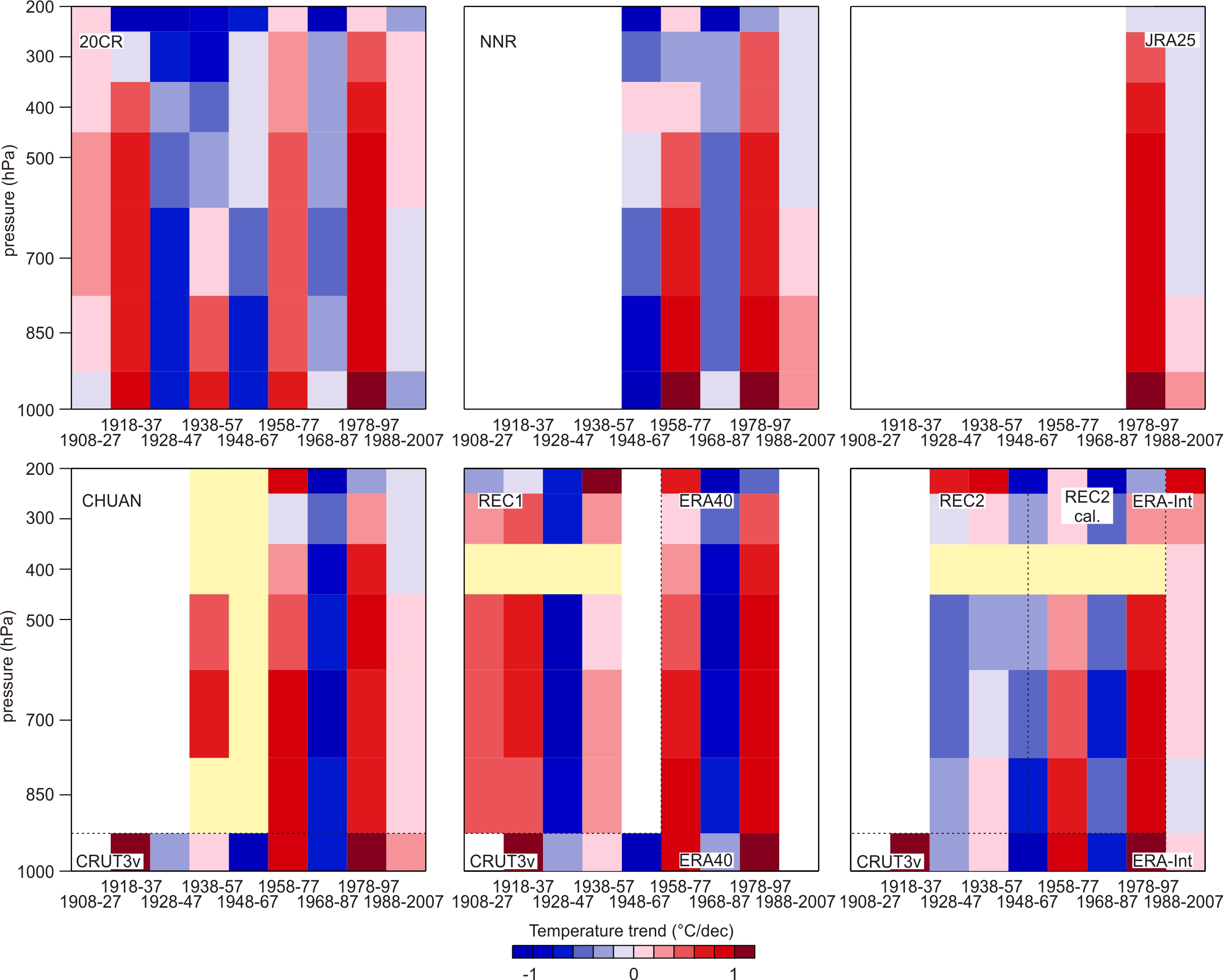Reanalyses Comparisons: Suggested Practices
Suggested Colors for Intercomparing Reanalysis Timeseries from S-RIP:
The Sparc Reanalysis Intercomparison Project (S-RIP --> https://s-rip.github.io/) has a suggested list of colors to use for comparing reanalysis time-series. The list can be viewed here https://s-rip.ees.hokudai.ac.jp/mediawiki/index.php/Notes_for_Authors --> https://s-rip.github.io/report/colourdefinition.html The colors are available in CVS format below, in NCL, and in XLS. The link to the S-RIP page has examples for Python and IDL --> https://s-rip.github.io/report/colourtables.html.
Note that the URLs have changed.
The colors are available in CVS format below, in NCL, and in XLS.
CSV:
r,g,b,c,m,y,k,RGB Hexadecimal,reanalysis
226, 31, 38, 0,86.28,83.19,11.37, E21F26, MERRA-2
246, 153, 153, 0,37.8,37.8,3.53, F69999, MERRA
41, 95, 138, 70.29,31.16,0,45.88, 295F8A, ERA-Interim
95, 152, 198, 52.02,23.23,0,22.35, 5F98C6, ERA5
175, 203, 227, 22.91,10.57,0,10.98, AFCBE3, ERA-40
114, 59, 122, 6.56,51.64,0,52.16, 723B7A, JRA-55
173, 113, 181, 4.42,37.57,0,29.02, AD71B5, JRA-55C or JRA-55 AMIP
214, 184, 218, 1.83,15.6,0,14.51, D6B8DA, JRA-25
245, 126, 32, 0,48.57,86.94,3.92, F57E20, NCEP-R1
253, 191, 110, 0,24.51,56.52,0.78, FDBF6E, NCEP-R2
236, 0, 140, 0,100,40.68,7.45, EC008C, 20CRv2c
247, 153, 209, 0,38.06,15.38,3.14, F799D1, 20CRv2
0, 174, 239, 100,27.2,0,6.27, 00AEEF, CERA-20C
96, 200, 232, 58.62,13.79,0,9.02, 60C8E8, ERA-20C
52, 160, 72, 67.5,0,55,37.25, 34A048, CFSR
179, 91, 40, 0,49.16,77.65,29.8, B35B28, REM
255,215,0, 0,15.69,100,0, FFD700, Other
0, 0, 0, 0,0,0,100, 000000, Obs
119, 119, 119, 0,0,0,53.33, 777777, Other Obs
This image shows how the colors can be used.

Suggested Practices: Climatologies:
Use 1981-2010.
Alternative download links to 20CR data set
Dear Sir/Madam,
I hope this message finds you well.
I would like to ask if you have alternative links in downloading the 20CR V1 and 2 reanalysis data sets. With the US Government shutdown, the esrl website does not work.
I'll appreciate any help.










Thanks for your help, I…
Thanks for your help, I really appreciate your help since I don't have alternative link to get access to the data.